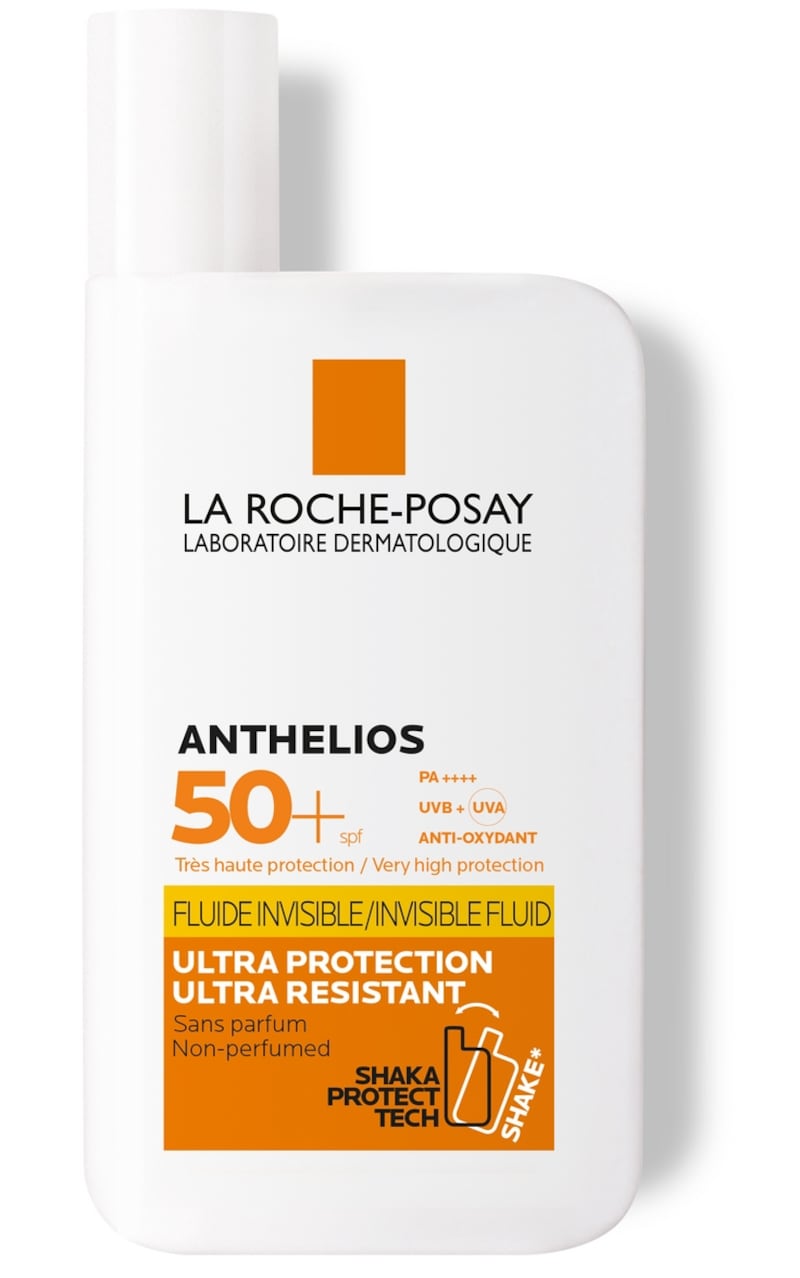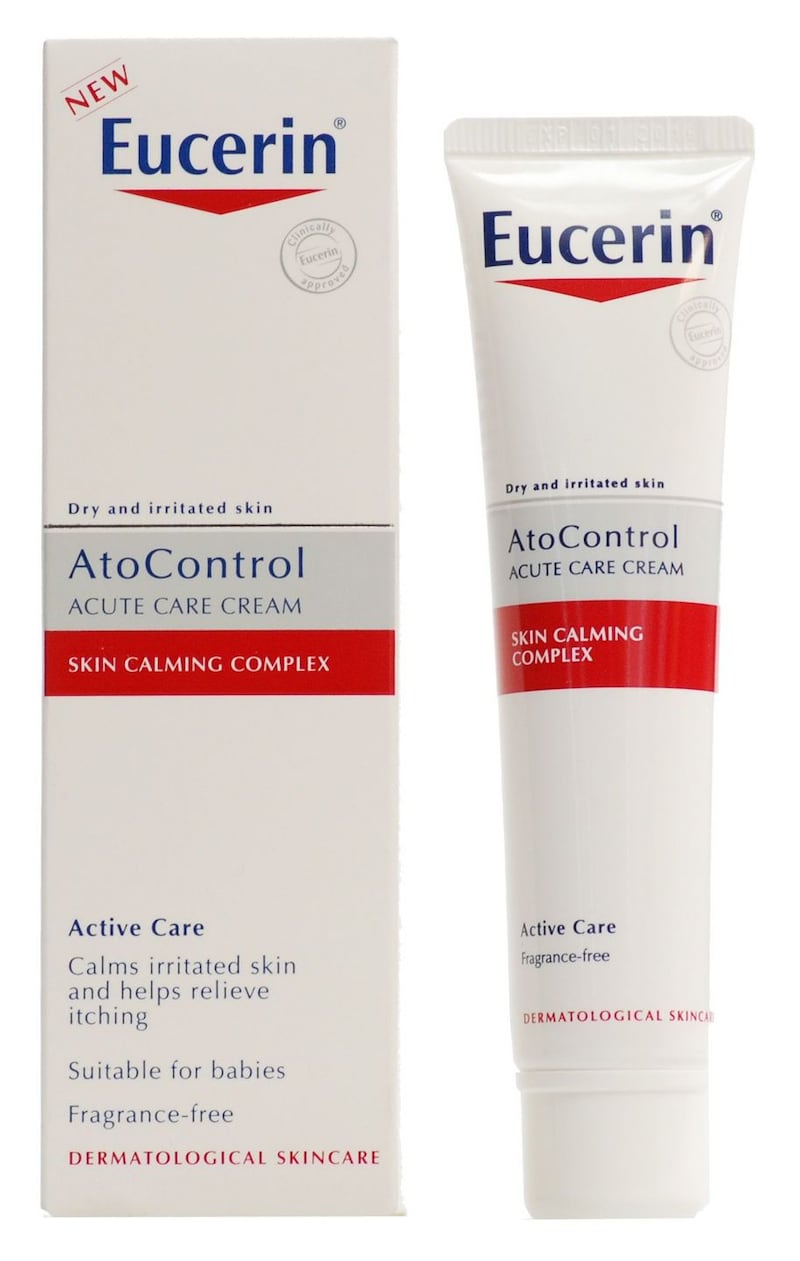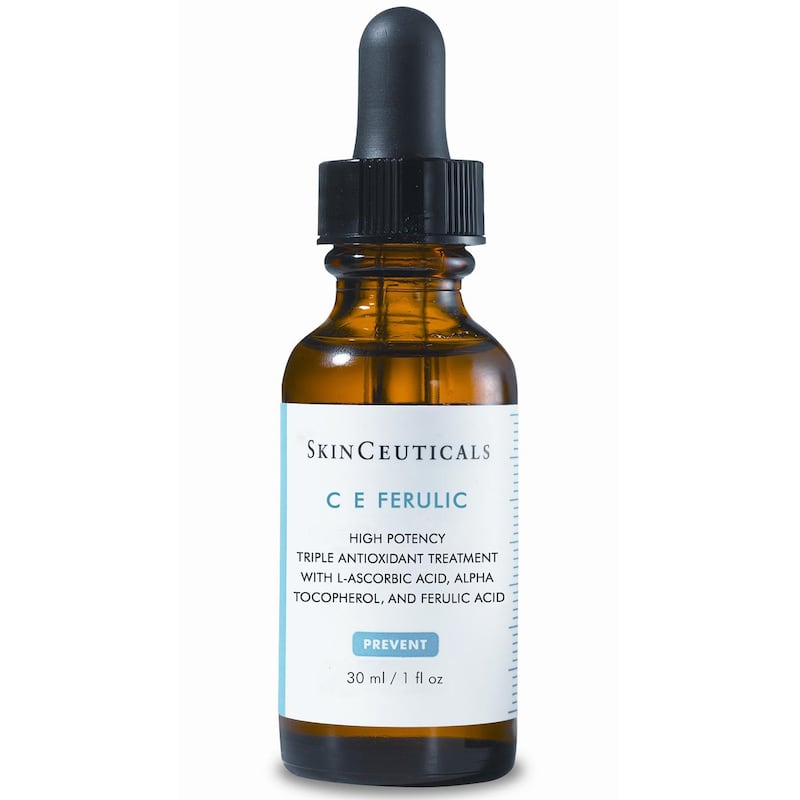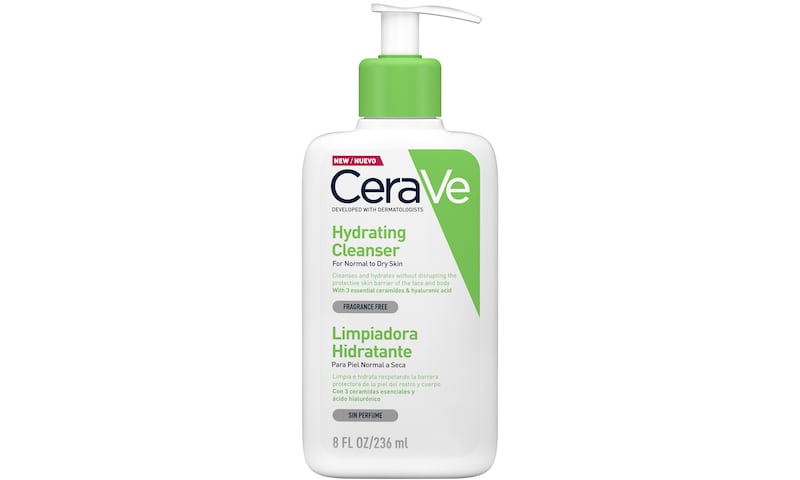Bav Shergill
Consultant dermatologist, Sussex
I wash my face in the morning with a gentle cleanser such as Cetaphil, or CeraVe. I prefer a little salicylic acid in the cleanser for a bit of exfoliation because, if you’ve got bits of dry skin on your face, the way the light bounces off it makes it look dull. I always check for ingredients that I think cause problems, like the preservatives MCI (methylchloroisothiazolinone) and DMI (dimethyl isosorbide).
I use Gillette cartridge shavers, because the guards on them mean you’re less likely to cut yourself if you’re half asleep in the morning, with King of Shaves gel. For showering, I use Sanex with zero additives. I get irritation from soap but I feel bad about having to recycle bottles.
I pat dry with a towel; if you’ve got mild eczema or dry skin, rubbing can cause irritation. I’m 50 and as you get older you produce less natural oils.
I use Kiehl’s Facial Fuel moisturiser; and for sun protection I like Altruist, started by a dermatologist friend, it’s a good price and product: SPF30 or 50, depending on the day. La Roche Posay Anthelios is good too. I don’t use SPF in winter.
‘I am divorced at 60, envious of my ex-husband’s new life and struggling with loneliness’
Look inside the most expensive house sold in Dublin so far this year
‘I learned about Irish time. People arrive late and think they are on time’
Bishop Casey’s Buried Secrets review: ‘He had no fear of being caught’

At night, I wash my face and use moisturiser again but what I really should do is use a bit of vitamin A-based retinoic acid, where I’m just starting to get ageing lines.
When I had really bad rosacea, I was prescribed antibiotics for six weeks, and a cream called Soolantra, which is very effective. It’s a lot more controllable now but I steer away from things that aggravate it for me, including refined sugars and beige foods, but most of all stress.
Thivi Maruthappu
Consultant dermatologist and dietitian, London
I make sure my diet is full of different-coloured fruit and veg – colours mean antioxidants. You need good protein sources for collagen and cellular renewal. You need healthy fats because they’re anti-inflammatory, and act as internal moisturisers.
I try to get everything I need through my diet but I take vitamin D, and if I haven’t been eating oily fish, I will take omega-3. I also put marine collagen powder in my coffee. I have noticed I need less moisturiser.
In the morning, I use Curél foaming facial wash. And then I use a prebiotic, Elemis Superfood multi mist. Because I have dry, sensitive skin, I like to get a little bit of moisture before I apply my actual moisturiser which is, at the moment, Eucerin AtoControl cream. Without fail, I use the Eucerin SPF100, because I’ve been in one of those Visioscans that studies your skin protection and damage up close.

In the evening, if I’ve been wearing make-up, I use Caroline Hirons cream cleanser. It takes everything off, it’s magic. Otherwise I use Elemis Pro-Collagen cleansing balm. After the summer, I get some pigmentation so I’ll add a vitamin C, like Clinique Fresh Pressed daily booster.
It’s probably better to use vitamin C in the morning, under your SPF, because it also acts as a protective antioxidant against UV, but because my sunscreen is so good, I don’t need that boost. My skin is too sensitive for retinol, which is partly why I’m so passionate about being careful with sunscreen and diet. I don’t do any peels, lasers or injectables.
I do have a professional red light machine, which was really expensive. I use it once or twice a week. The ones for home use, you’ve got to do them most days to get results. I massage my face too, though I often forget. And I have a mindfulness practice, because stress has a huge effect on the skin.
I have maybe a glass of wine a week, because people who drink more alcohol will have more fine lines and wrinkles and it makes rosacea, eczema or psoriasis worse. And I try to be careful with sugar.
Sandi Skotnicki
Canadian dermatologist and author of Beyond Soap
I largely avoid using water on my face. I use the Bioderma micellar water to wash and remove make-up. Unlike water, it moisturises. If I’m wearing heavier make-up I use the creamy cleanser I helped create with a Canadian company, Three Ships Beauty, called Harmony. I do use water with that one and then I might use the micellar cleanser after that.
In the morning I use vitamin C, a few drops of the SkinCeuticals C E Ferulic with 15 per cent L-Ascorbic Acid, vitamin C serum, or cheaper alternatives by Drunk Elephant and Vichy. The sunscreen I’m using (I did a little work with the company but I don’t get royalties or anything) is by LaSpa. It’s a tinted mineral SPF20. I like how it feels. My other go-to is Colorescience tinted mineral SPF50.

I have sensitive skin so I can’t use retinol or retinoic acid every night. I will use a prescription retinoic acid or tretinoin (a synthetic version) once a week if I can – sometimes in the winter I can’t. And other nights I try to use a retinol at 1 per cent or 0.5 per cent – I go lower in winter. I have ones by Neutrogena and CeraVe.
The prescription products are about 20 times stronger and I will also try to use that on my neck and décolletage area, even the back of my hands if I remember. I was sent this Korean brand, 107, to try and its Everyday Plump moisturiser is great; fragrance-free, no allergens. In the winter I often use SkinCeuticals Triple Lipid Restore because it’s heavily moisturising. It’s nice if you’ve used retinol a few nights and then take a break to repair the barrier.
The only other thing I use once a week, depending on how my skin is, is glycolic acid. It’s like a little mini chemical peel, if your skin’s looking dull. I might add it in the summer, especially if I get melasma, a little patch of brown on my cheeks.
Every morning I put 10mg of marine collagen powder in a shake with berries, turmeric, seaweed and fresh greens. I do treatments called a BBL [broadband light] or an IPL [intense pulsed light], often at the end of the summer, to clean some of the brown I’ve developed. And I do what’s called an Aquagold facial, which is sort-of micro needling with a bit of Botox and filler – I do that quarterly. Because I’m 56, I think I’m going to start doing some fractionated lasering, which is resurfacing the skin – it’s basically micro needling on steroids.
I do very little to the skin on my body. I wash my bits with either Bioderma or Uriage shower gel or Cetaphil body wash. I don’t moisturise; I wear sunscreen – I like Vichy. That’s it.
Sharon Belmo
Clinical lead for skin of colour at the Centre of Evidence Based Dermatology, Nottingham University
I mostly wash my face with CeraVe hydrating cleanser or, when I’m wearing make-up, CeraVe hydrating oil cleanser. But morning and night, two or three times a week, I use NeoStrata foaming glycolic wash because the exfoliating glycolic acid leaves my skin smooth and bright. You don’t want to over-exfoliate because it can cause dryness and irritation.
After I wash, I use Skinbetter Science Alto Defense Serum, with not just vitamin C but about eight antioxidants – they’re all important. My moisturiser is Epionce Renewal facial lotion which is non-comedogenic. In the winter I use its Renewal facial cream, which is thicker. I do all that morning and night.
Then I apply my sunscreen: Heliocare, oil-free sunscreen, SPF50. It’s a mineral sunscreen that’s good for acne-prone skin. Most of my patients are of colour and I’m always seeing hyperpigmentation – uneven skin tone – and you want mineral sunscreen for that because as well as UV light, it protects against visible light, which in darker skin tones makes hyperpigmentation worse.
[ The best skincare products for menOpens in new window ]
Just because everyone’s using a retinol it doesn’t mean I have to use it. If you’ve got no skin concern, why change? I’m 41 and an antioxidant product for me is enough. I did use a prescription retinoid – adapalene – when I had a bit of acne in my 20s and early 30s. Then I went on the contraceptive pill, which can also be used to treat acne.
I wouldn’t recommend soaps. I use a Dove shower gel. I moisturise my body every time I shower. It’s cultural and I hate dry skin. I use Lubriderm Advance Therapy, but I also love La Roche Posay Lipikar balm and CeraVe moisturising cream. These have ceramides in them, which are good for everyone but for darker skin tones especially.
I use chemical SPF on my body. I would say: buy a cheaper one for the body so that you don’t skimp on it. I use LaRoche Posay.
Anthony Bewley
Consultant dermatologist, Royal London hospital
I try to get a regular amount of sleep and I take time out to relax. We know that if you treat people with phototherapy (UV light), let’s say for psoriasis, and you play them relaxation tapes or they use meditation techniques, they get better results.
I always wear a sunblock. If I’m abroad or outdoors, I usually use factor 50 sunblock, because we know that really helps in terms of photo ageing (but I also take vitamin D supplements). In the winter, I’ll use a factor six.
I like Altruist factor 50, and for factor six, Boots Soltan. I use the children’s range because I have a predisposition to eczema and the children’s ranges tend to be free of preservatives called parabens.
I avoid soaps for showering – Dermal 200 is good instead, or CeraVe – and when I’m washing my hair I try to avoid the shampoo trickling over my body because that can dry your skin. I have to wash every day, of course, but I shower every other day.
If I go to the gym, I don’t always shower because urea is produced in your sweat, which does not smell and is a good humectant – a chemical, like glycerine, that holds water within the skin. To avoid smelling, you only need to wash oil-producing areas like the groin, armpits and underneath breasts. When I finish at the gym, I pat myself dry, and take some cool-down time, because going from hot suddenly to cold can lead to fixed, dilated blood vessels. When I get home I will wash where I need to wash.

My regime for my face is minimal. I only use an emollient cream in the winter. It could be anything mild and paraben-free such as Aveeno or CeraVe; for me, it has to be lanolin and linalool-free, too. I don’t use hyaluronic acid or resinoids because they can irritate my skin.
For shaving, I use Gillette gel, but I’m happy with anything SLS [sodium lauryl sulphate] and paraben-free. I shave down, with the direction of the hair, so as not to irritate the skin. I wash away excess gel with water – lukewarm rather than hot, to avoid flushing. I make sure I don’t use blunt razors; I like the Harry’s range, with a flexible head.
Anjali Mahto
Cosmetic and medical dermatologist, London. Author of The Skincare Bible
First thing in the morning, because my skin is slightly oily and blemish-prone, I use a foaming cleanser, currently an Ilia one. If my skin needs extra hydration, I use Lancôme Rénergie peptide moisturiser, otherwise I might just use Eucerin hyaluronic acid serum and then sunscreen on top. My SPF is Heliocare 360˚ oil-free colour gel. It’s slightly tinted and doesn’t clog my pores.
Oily skin tends to have quite a resilient barrier, so I can use a prescription vitamin A (retinoid) product at night because it’s more effective than something bought over the counter in terms of fine lines and pigmentation, evening skin tone. My basic cleanser and moisturiser help me avoid multiple active ingredients and the risk of redness and peeling.
I use Aveeno body wash. My body skin is prone to dryness so I don’t use soaps. And moisturiser-wise, I like Sol de Janeiro Brazilian Bum Bum Cream. I will splurge on that even though I know it’s no better than a cheaper moisturiser. I like the way it looks. I like the way it feels. It smells like a holiday. For body SPF, as long as it’s a factor 30 to 50, I will use whatever’s on the go.
[ Fashion The easy, affordable routine to calm and balance your skinOpens in new window ]
But skincare can only do so much and one of the perks of my job is having access to what really does help: lasers and peels and other treatments.
With chronological skin ageing, we start to lose collagen, elastin and hyaluronic acid, and we get more sunspots, freckles or uneven skin tone. Not everybody is bothered by those things but if you are, treatments such as lasers can boost your own collagen or exfoliate the upper layers of the skin, getting rid of these superficial pigments. For pigmentation issues, I do a peel once every month or two.
My take on supplements – apart from vitamin D – is that it’s better to get the nutrients you need from whole foods than to pop a pill. – Guardian




